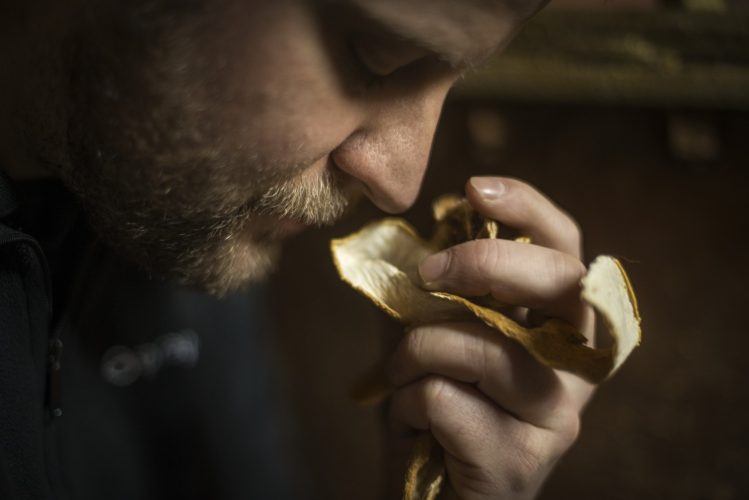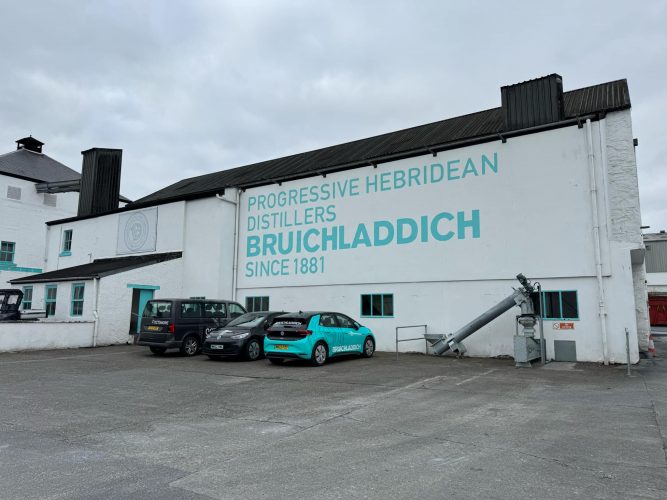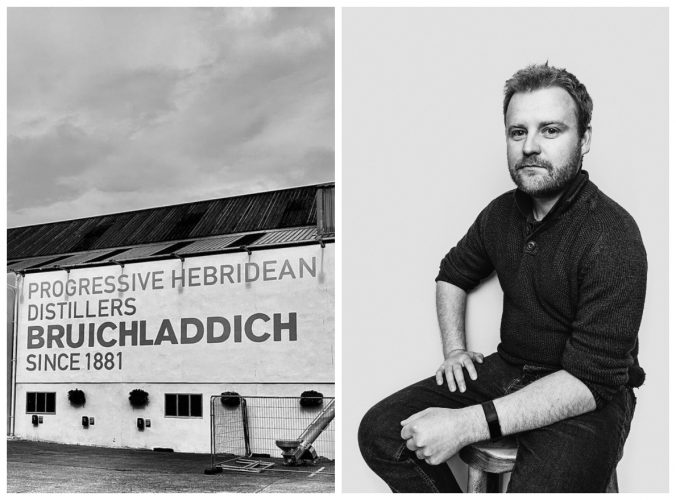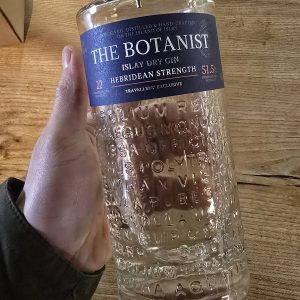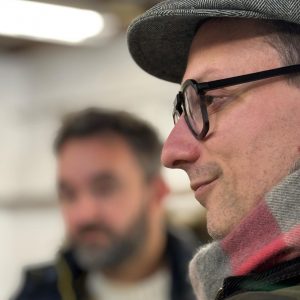Adam Hannett – Capturing the contours of Islay
Γιαννης Κοροβεσης•Articles
An exclusive interview with the master distiller behind The Botanist gin and the whiskies of Bruichladdich Distillery—perhaps Scotland’s most terroir-driven spirits.
I haven’t met many people who started from such a humble position within a brand of historic magnitude, global reach, and with a living legend at the helm—only to rise to the very top of the production ladder in just a few years, all while remaining effortlessly cool, approachable, and genuinely friendly. Adam Hannett has achieved all of this in under fifteen years. Today, he’s at the helm of Bruichladdich Distillery, overseeing and defining the production for an impressively diverse portfolio: the storied Bruichladdich single malt, the peated and wildly innovative Port Charlotte, the “peat bomb” Octomore, and one of the world’s most successful gin brands, The Botanist. These three whiskies and one gin manage to capture the soul of the Isle of Islay in the most authentic way.
I had the great pleasure of meeting Adam on his home turf during my recent trip to the windswept island of Islay, accompanied by my travel companion Ioannis Aikaterinidis. We sat down in person to talk about the ambitious project known as Progressive Hebridean Distillers, its impact on the local island community, the role of terroir in spirits, regenerative agriculture, sustainability, and of course… Ugly Betty, the uniquely beautiful and customized still behind The Botanist.
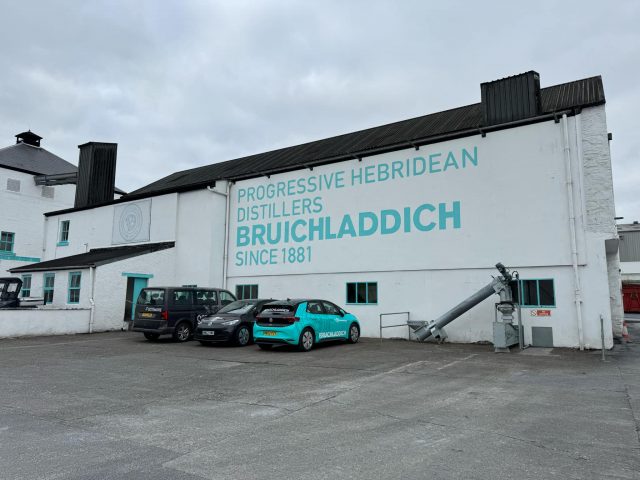
When Adam Hannett first started working as a tour guide at the Bruichladdich distillery, the distillery itself was still in the early stages of its revival. You see, like many other distilleries, Bruichladdich had ceased production in 1994, only to be brought back to life in 2000 following its acquisition by Murray McDavid, under the leadership of Mark Reynier, Jim McEwan, and Simon Coughlin.
“When I first started at Bruichladdich,” Adam recalls, “we would close for two weeks over Christmas, and we genuinely didn’t know if we’d have jobs to return to in January. The uncertainty was enormous. So, at that time, the only thing you could really do was work hard and hope. That’s what Jim McEwan and Duncan McGillivray passed on to me above all else: a solid work ethic and the value of hard work. They also taught me to trust myself and believe in my abilities.”
And that’s exactly what Adam did—drawing out every ounce of skill and confidence from within himself, inspired by a man (Jim McEwan) so charismatic that he is now considered a living legend—not just on Islay, but throughout Scotland. Perhaps the most telling example of this mentorship is the story of Black Art.
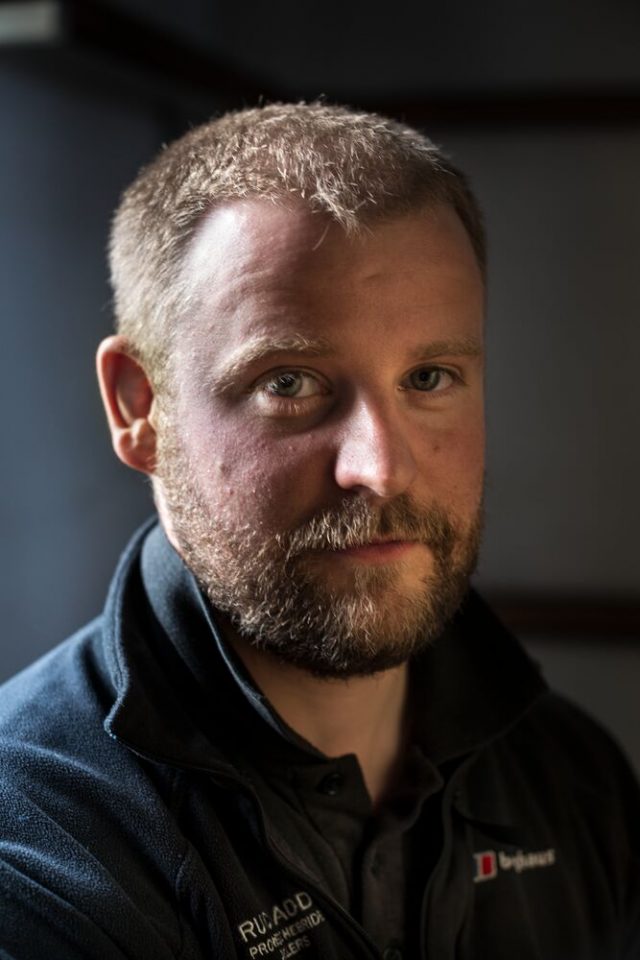
Adam Hannett recounts the legendary story of Black Art
Black Art was one of Jim McEwan’s most iconic creations—a whisky shrouded in mystery, about which almost nothing was known beyond the bare essentials: it was made from whiskies distilled before the distillery’s closure, a carefully guarded secret, a legacy of both Bruichladdich’s past and of the distiller himself to whisky lovers around the world. It’s no surprise that it still comes up in hushed tones in many whisky conversations.
In 2015, just a few weeks before his retirement, McEwan wrote the recipe for Black Art on a small piece of paper and handed it to Adam. This moment came after years of mentorship and the gradual passing down of knowledge, craft, and philosophy to his closest collaborator.
“I thought you might find this useful,” McEwan said as he handed over the note to his protégé.
Adam had no idea his mentor was about to retire. To him, it was just another morning when the core production team gathered for their daily tea in McEwan’s office—except that day, it was just the two of them. They chatted about football, discussed a few matters at the distillery, and then, quietly and without ceremony, McEwan gave him the slip of paper with the recipe.
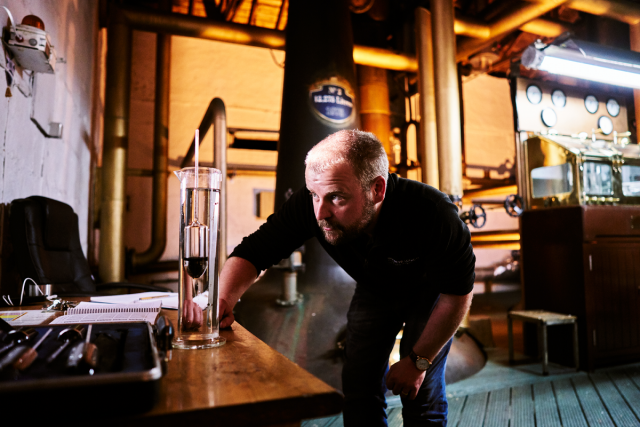
In a moment that was—by Scottish standards—deeply emotional, Adam simply thanked him and they got on with their day. “Thanks very much, I’ll have a look at it,” Adam Hannett said, and once McEwan had left the office, he read the note… and tossed it into the bin.
“Anywhere else in the world, receiving something like that would’ve been cause for celebration—but not in Scotland.”
At the time, Adam still didn’t know that McEwan would soon be retiring, nor that he himself would be taking the reins of Bruichladdich. What he did know, however, was that it would now be up to him to rely on his own experience and instincts—along with the confidence that his former mentor had carefully instilled in him. And that’s exactly what he did, continuing the legacy of Black Art through his own unique approach.
- Το distillery και travel exclusive, overproof Botanist.
- Το Botanist τριών χρονών ωρίμασης. Απίθανο!
The Botanist: the gin from the small island of Islay that conquered the world
Like many great spirits, The Botanist began as an ambitious experiment. It was the first gin ever produced on an island known for its peated whisky tradition—emerging from a distillery that had spent over a century focused solely on single malt production. Even the still it was made in was originally designed for whisky.
“Ugly Betty” is an odd-looking, unconventional Lomond-style still—quirky in appearance and highly experimental by design. It was originally developed at the Inverleven distillery by Alistair Cunningham, featuring removable sections and a fully customizable distillation setup. In 2003, Jim McEwan essentially saved the still from oblivion, transporting it to Islay. When it was reassembled, the team modified it with the addition of a metal basket for vapour infusion. They packed it with The Botanist’s botanicals and fired it up—without the faintest idea of what the outcome might be.
The result, of course, astonished everyone.
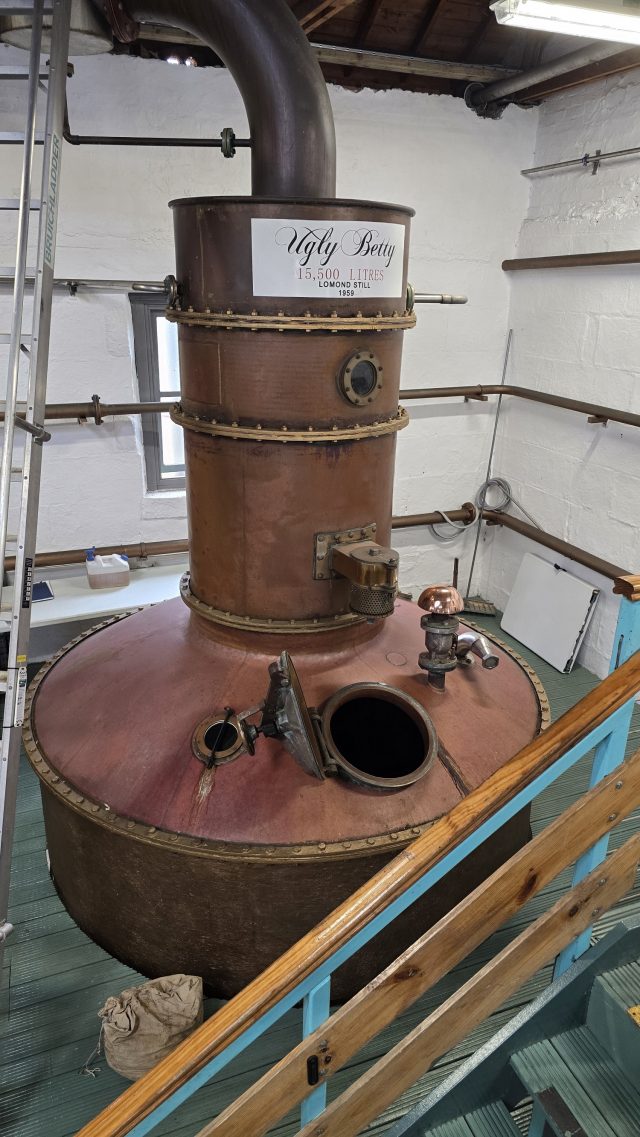
I asked him if they had ever tried distilling whisky with that still, and he told me they’re a bit superstitious when it comes to things like that. “Once we tried it with gin and the result was amazing, we never put anything else in it again,” he said. “Just think—during that very first run, we didn’t even have a thermometer to measure the working temperature of the still. We slowly raised the temperature of the pot, with our hands literally inside the alcohol along with the core botanicals. When it got hot enough that we couldn’t keep our hand in anymore, that’s when we knew we’d reached the right point. The alcohol never actually boiled. And even today, even though we do have thermometers now, we still do the hand test!”
The 22 botanicals of The Botanist and the juniper branch
To develop the recipe for The Botanist, the team brought in two Scottish botanists, Richard and Mavis Gulliver, in an advisory role. The couple provided a list of 30–40 botanicals they had identified as growing abundantly on the Isle of Islay. From that list, the production team selected 21, which led to the gin’s initial working name: G21.
But in reality, it was never just 21 botanicals. During the first distillation run, then-CEO Mark Reynier added a single sprig of locally foraged Islay juniper into the still—bringing the total, at least symbolically, to 22. That number remains proudly displayed on every bottle of The Botanist to this day.
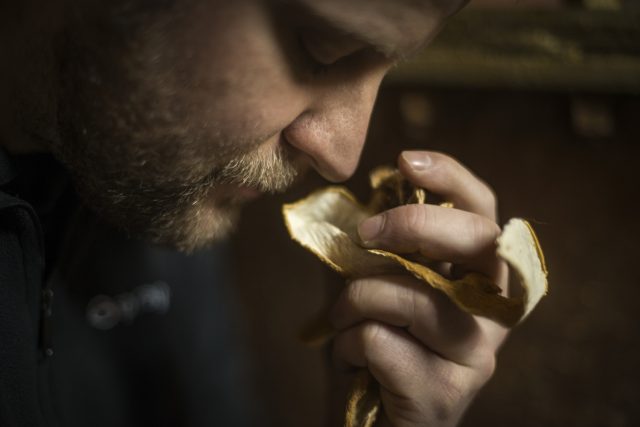
The island’s juniper, however, couldn’t support such large-scale production. Adam Hannett explained that the number of juniper trees had dwindled over the centuries due to illicit distillation practices, and remains low to this day—partly because local wildlife still enjoys munching on the lower branches.
And while Reynier’s sprig was largely symbolic, today The Botanist team, through the Botanist Foundation, is working tirelessly to regenerate native juniper. They’re actively replanting, monitoring the island’s overall biodiversity, and training a new generation in ethical foraging. One of those foragers, in fact, is Adam Hannett’s own sister—now working full-time, hand-harvesting botanicals from the wilds of Islay for The Botanist.
Adam Hannett captures the essence of Islay in a bottle of gin
For Adam Hannett, the goal isn’t to make just another gin. The Botanist team aims to distill the island itself—its scent, its texture, its energy. “When you make whisky, you can’t capture everything,” he explains. “There are plants here—gorse flowers, wild mint, bog myrtle—with incredible aromas. But they can’t be used in whisky. Gin, however, allows us to express them.”
It’s this belief that makes The Botanist feel like an entire landscape in a glass. And having now travelled to Islay, experienced its raw natural beauty, and etched its contours into my memory, I find its magic returning to me—sip by sip—through this extraordinary Scottish gin.
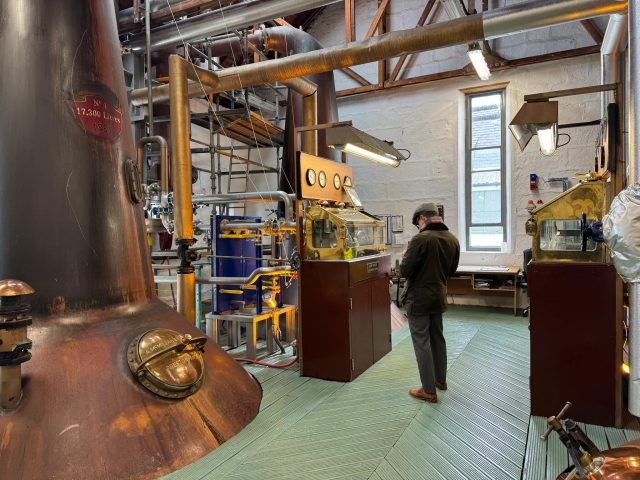
Progressive Hebridean Distillers: Innovative production, conscious philosophy
But the fame of Bruichladdich Distillery didn’t peak with the creation of The Botanist, nor did it wane after the retirement of Jim McEwan. Under the baton of Adam Hannett, the distillery has gone even further. They bottled a quadruple-distilled whisky inspired by documented accounts from the 17th century, reintroduced the cultivation of rye to the island using regenerative and circular farming methods, and sourced biodynamically grown barley from farms committed to carbon-sequestering agricultural practices.
“We discovered, quite by accident, that if you plant rye in a field one year and follow it with barley the next, the outcome is not only better agriculturally, but the soil itself improves—reducing the need for chemicals, fertilizers, and soil enhancers.”
After touring all of the distillery’s facilities, we made our way to the warehouses, where their casks mature in silence. There, we had the chance to taste the infamous quadruple-distilled whisky, which Bruichladdich released a few years ago, inspired by a travel guide from 1695. According to the writer of that guide, “A single spoonful of the spirit would let you live forever; two spoonfuls would blind you; and three… well, by then you wouldn’t care about your eyesight, because you’d be dead.”
Ioannis and I only had a few sips—surely less than a full spoonful—of this 18-year-old spirit, bottled at a staggering 68% ABV. We felt just fine afterward, so we figure there’s still hope we might live forever.
Yet despite all these bold experiments, Adam Hannett’s guiding principle remains slowness and intentionality. “Whisky takes decades,” he explains. “And mistakes don’t show up right away. It’s not like uploading a video to YouTube. If you mess things up, you won’t realize it until ten years later.”
More than just a distillery
In practice, this is an entire community devoted to the island’s culture—committed to helping it flourish. Guided by these values, the distillery now employs around a hundred people and supports dozens of farmers across Islay. Twenty years ago, no one was growing barley for whisky on the island—it was cheaper and more convenient in the short term to source it from elsewhere. Today, over twenty farms cultivate barley, thanks in large part to the distillery’s pledge to prioritize local ingredients.
They also collaborate with the James Hutton Institute to develop barley varieties that require fewer interventions—less chemical input, less energy, and less fertile land—while leaving healthier soil behind. Rye, as mentioned earlier, is slowly becoming a staple in Islay’s farming rotation, naturally enriching the soil and reducing the need for synthetic treatments.
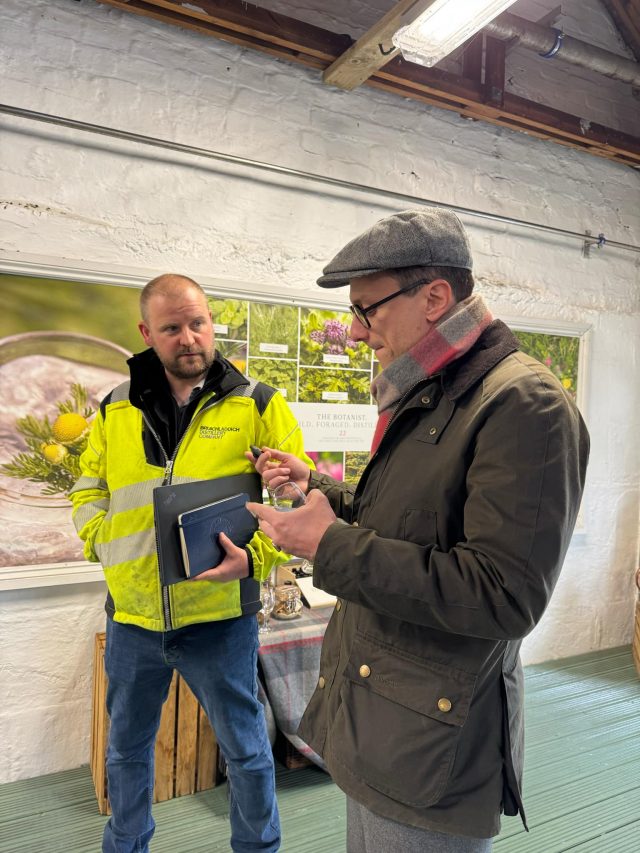
And that is what real sustainability looks like—sustainability in action, not just another bullet point for the next press release. Bruichladdich has significantly reduced unnecessary packaging, redesigned its bottles to be made from 80% recycled glass, and consciously rejects marketing gimmicks in favor of authenticity. “The days of metal tins are over for us,” says Hannett. “Why bring metal from the other side of Scotland—or the world—just to package your bottles?”
As for peat—Islay’s sacred cow and currently an endangered resource on the island—Bruichladdich takes a very different approach. The distillery has invested in long-term peatland restoration projects, in collaboration with environmental foundations, aiming for a net positive carbon capture outcome over time.
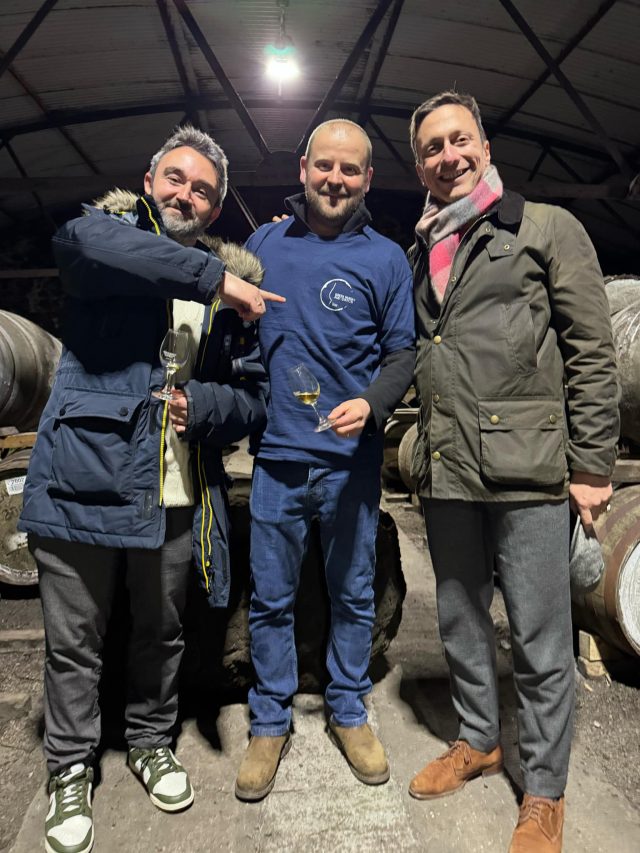
We concluded our fascinating conversation with a glass of 35-year-old Bruichladdich, drawn straight from the cask—a cask that had previously held Pedro Ximénez sherry, instantly elevating our whisky expectations in Scotland to a new peak. I honestly don’t know if we tasted another whisky during the rest of our time on the island that could rival that PX-aged gem.
What I do know for certain is that we met someone who embodies everything modern distilling should stand for: dedication, integrity, innovation, respect for one’s land, and above all, a belief that things are better when they’re done right—not just fast.
Adam Hannett possesses that rare quiet confidence found only in those who’ve reached the top through hard work, not noise. And that, perhaps, is the rarest spirit of all.



